
Roots
There is a quiet, often unseen dialogue happening between our hair and the world around us, even as we surrender to the stillness of night. For those with textured strands, this nightly exchange holds particular significance, shaping the very resilience of each coil and curl. We often consider our waking routines—the cleansing, the conditioning, the styling—as the primary architects of hair health.
Yet, the hours we spend in repose, adrift in dreams, silently sculpt the fate of our hair fibers. This section seeks to peel back the layers of this nocturnal interaction, laying bare the fundamental ways our sleep habits, seemingly innocuous, contribute to the underlying stresses that precede visible breakage.
The integrity of our hair, a testament to its vibrant life, hinges upon the health of its foundational components. Each strand, a marvel of biological engineering, possesses an outer protective layer known as the Cuticle. This delicate shield, composed of overlapping, scale-like cells, acts as the hair’s primary defense against external aggressors. Beneath this outer guard lies the Cortex, the hair’s very core, where the bulk of its strength and elasticity reside.
The arrangement and condition of these structures dictate how hair responds to friction, tension, and environmental shifts. When the cuticle is smooth and intact, it reflects light beautifully and allows for effortless movement, reducing tangles. However, when disturbed or lifted, this protective layer exposes the vulnerable cortex, setting the stage for compromise.
Our nightly repose silently sculpts the fate of our hair fibers, revealing a quiet, often unseen dialogue between our hair and the world.
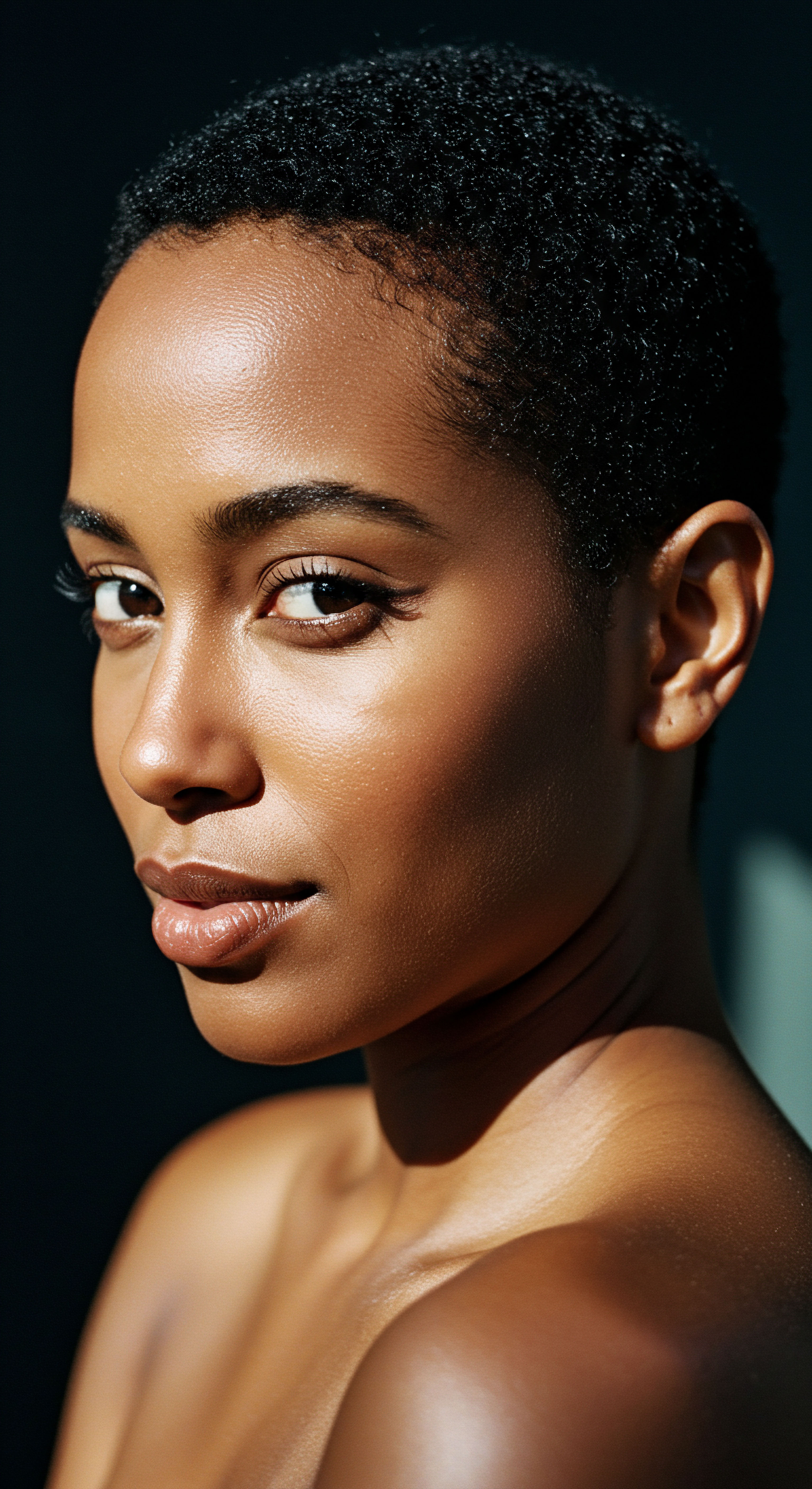
Hair Fiber Architecture and Vulnerability
The distinct architecture of textured hair, characterized by its elliptical cross-section and numerous twists and turns along the fiber, renders it inherently more susceptible to mechanical stress. Unlike straight hair, which presents a relatively uniform surface, the bends and curves in textured strands mean that points of contact and friction are more frequent and concentrated. These natural inclinations in the fiber’s path create areas where the cuticle is naturally lifted or less uniformly aligned, making these sections particularly prone to snagging and abrasion. The unique helical structure, while contributing to its magnificent volume and spring, also means that the hair fiber is not always evenly supported along its length when subjected to external forces.
Understanding the intrinsic nature of textured hair is the first step toward mitigating nocturnal damage. The fiber’s natural inclinations toward dryness, due to the difficulty of natural oils (sebum) traversing the winding path from scalp to tip, further compounds its fragility. Dry hair, with its already compromised elasticity and often raised cuticles, experiences heightened friction against surfaces. This dryness, coupled with the structural nuances, forms a complex interplay that makes nighttime care not merely an option, but a fundamental act of preservation.
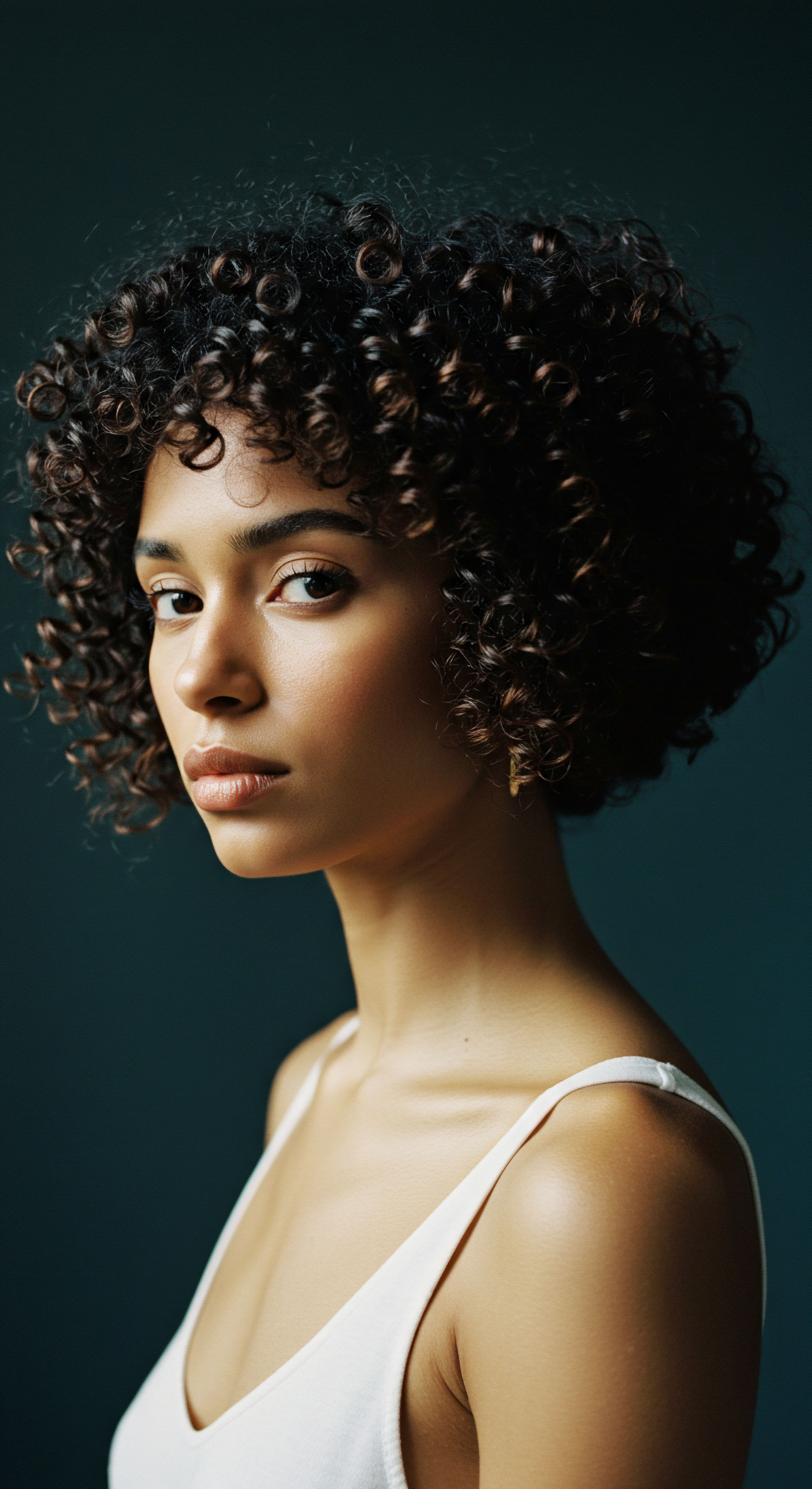
How does Hair’s Inherent Structure React to Nightly Friction?
The reaction of hair’s inherent structure to nightly friction is a process of gradual degradation, beginning with the outermost cuticle. As hair rubs against abrasive surfaces like cotton pillowcases, the delicate, shingle-like cells of the cuticle are forcibly lifted, ruffled, or even chipped away. This initial disruption creates a rougher surface, increasing the coefficient of friction and leading to further entanglement between strands. The more the cuticle is disturbed, the less effectively it can protect the inner cortex.
Once the cuticle is compromised, the inner cortex, responsible for the hair’s strength and elasticity, becomes exposed. This exposure renders the hair fiber vulnerable to moisture loss and direct physical damage. The constant pulling and tugging, even gentle movements during sleep, can stretch and strain the weakened cortex, leading to microscopic tears and internal structural damage.
Over time, these micro-damages accumulate, manifesting as visible splits, frayed ends, and ultimately, breakage. The hair’s natural curl pattern can also be distorted as the fiber loses its uniform integrity, leading to a diminished definition and increased frizz.
- Cuticle Abrasion ❉ The primary impact of friction is the lifting and wearing away of the hair’s protective outer layer.
- Moisture Depletion ❉ A compromised cuticle struggles to retain internal moisture, leaving the hair dry and more brittle.
- Cortex Exposure ❉ Without cuticle protection, the hair’s inner strength core becomes susceptible to damage and weakening.
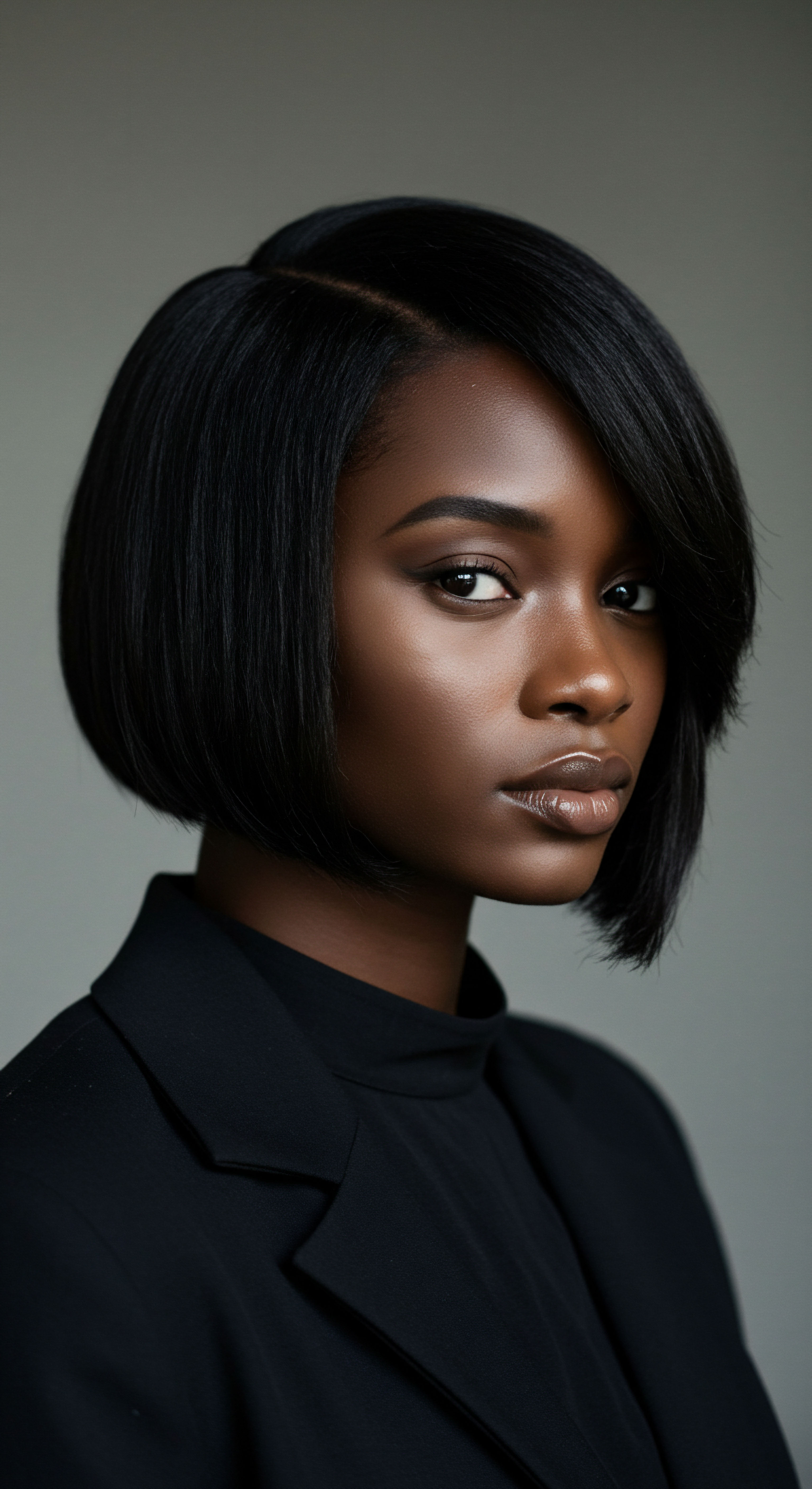
Ritual
The passage into slumber, a time for the body’s deep restoration, can inadvertently become a period of profound challenge for our hair. Our daily practices, the deliberate choices we make before our heads meet the pillow, wield considerable influence over the health and resilience of our strands. This section invites a closer look at these nighttime rituals, moving beyond mere routine to explore how conscious choices can transform sleep from a potential aggressor into a powerful ally for hair fiber strength. It is about understanding the practical wisdom that shields our hair from the stresses of the night, offering guidance on how to safeguard its delicate structure.
The material beneath our heads during sleep is perhaps the most direct determinant of nocturnal hair stress. Conventional cotton pillowcases, with their absorbent nature and coarse fibers, act as tiny, relentless sponges, drawing precious moisture from the hair. Simultaneously, the friction generated as hair rubs against this rough surface can abrade the cuticle, causing it to lift and fray. This constant mechanical agitation, repeated night after night, is a silent yet significant contributor to weakened hair fibers.
Our daily practices, the deliberate choices we make before our heads meet the pillow, wield considerable influence over the health and resilience of our strands.
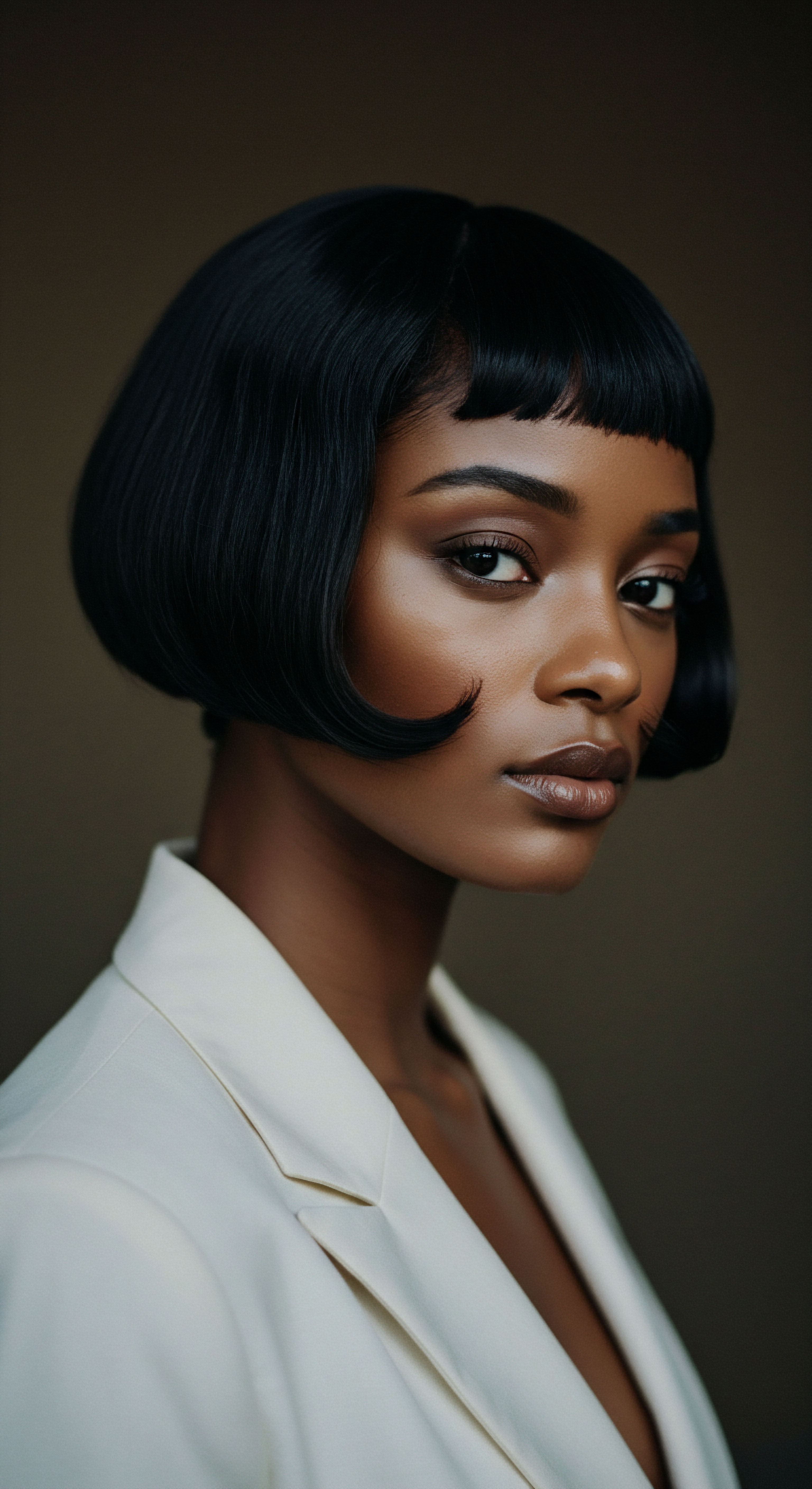
The Silent Aggressors of the Night
Beyond the pillowcase, the way hair is managed before sleep also plays a critical role. Leaving textured hair loose and unbound can lead to tangling, knotting, and subsequent breakage when movements occur during sleep. The hair strands become intertwined, creating a complex web that, when subjected to friction, pulls and stretches individual fibers beyond their elastic limit. This mechanical strain is particularly detrimental to hair that is already prone to dryness or has a compromised cuticle.
Consider the subtle, yet powerful, effect of consistent nighttime preparation. A study published in the Journal of Cosmetic Science, while not directly addressing textured hair, observed that mechanical friction, even at low forces, significantly impacts hair surface integrity. One particular investigation into the friction properties of hair found that the coefficient of friction increased significantly when hair was dry or had damaged cuticles, suggesting a feedback loop where damage leads to more friction, which in turn leads to more damage. This reinforces the need for protective measures, especially for hair types already predisposed to dryness and cuticle lifting.

How do Specific Sleep Habits Contribute to Hair Fiber Stress and Eventual Breakage?
Specific sleep habits contribute to hair fiber stress and eventual breakage through a combination of mechanical friction, moisture depletion, and inappropriate tension. The primary culprit is often the direct contact of hair with sleep surfaces. When hair, especially textured hair with its natural bends and coils, rubs against materials like cotton, the constant agitation causes the cuticle layers to lift and become damaged. This abrasion weakens the hair’s outer defense, making it more susceptible to environmental factors and further mechanical stress.
Moreover, the absorbent nature of many common sleep surfaces can wick away essential moisture from the hair. Textured hair already tends to be drier due to the structural challenges of sebum distribution. This nightly dehydration renders the hair more brittle and less elastic, increasing its vulnerability to breakage under even minimal tension. The absence of protective styling during sleep, such as leaving hair loose, allows strands to tangle and knot freely.
These tangles then become points of concentrated stress when the sleeper shifts position, leading to pulling, stretching, and ultimately, fracture of the hair shaft. The cumulative effect of these seemingly minor stressors, repeated over countless nights, profoundly compromises hair fiber integrity, leading to noticeable thinning, frayed ends, and reduced length retention.
The table below illustrates the contrasting effects of different sleep surfaces on hair health, highlighting the benefits of informed choices.
| Surface Material Cotton Pillowcase |
| Friction Level High |
| Moisture Absorption High |
| Hair Benefits / Risks Increased frizz, breakage, dryness, tangles. |
| Surface Material Satin Pillowcase |
| Friction Level Low |
| Moisture Absorption Low |
| Hair Benefits / Risks Reduced friction, less frizz, moisture retention, less tangling. |
| Surface Material Silk Pillowcase |
| Friction Level Very Low |
| Moisture Absorption Very Low |
| Hair Benefits / Risks Optimal friction reduction, superior moisture retention, improved hair smoothness. |
| Surface Material Choosing a smooth, non-absorbent sleep surface is a foundational step in preserving hair fiber integrity during nightly rest. |
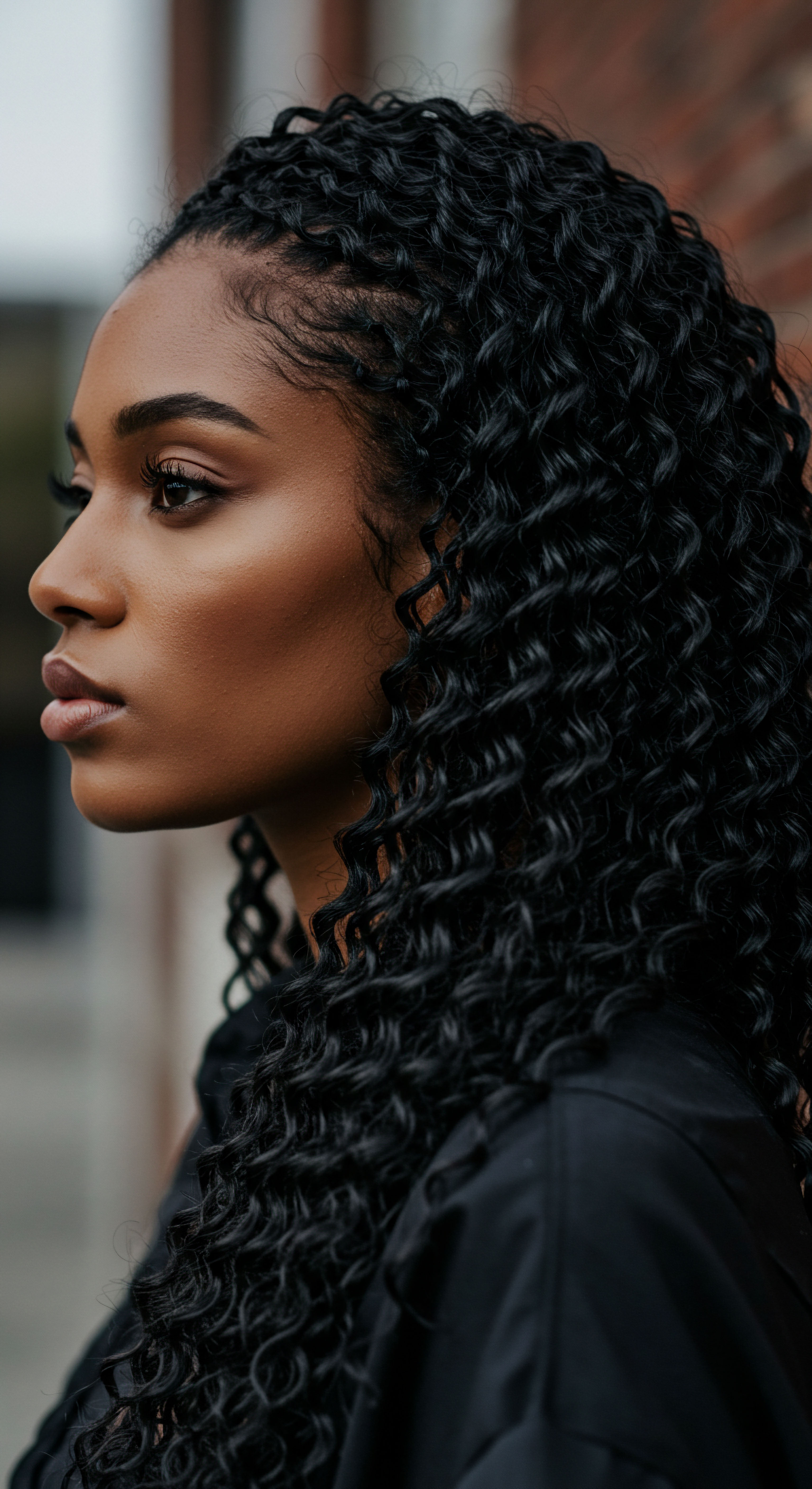
Protective Styling for Nightly Serenity
The purposeful act of securing hair before sleep is a cornerstone of preserving its delicate structure. Styles such as loose braids, twists, or a simple pineapple bun minimize the direct contact of hair strands with abrasive surfaces and reduce the likelihood of tangling. These methods encase the hair, creating a protective barrier that shields the cuticle from mechanical stress. The tension applied should be gentle, never pulling tightly on the scalp, as excessive strain can lead to traction alopecia over time.
Beyond styling, the choice of hair covering or wrap is equally important. Satin or silk bonnets, scarves, and pillowcases provide a smooth, frictionless surface for hair to rest upon. Unlike cotton, these materials do not absorb hair’s natural oils or applied products, allowing the hair to retain its vital moisture throughout the night.
The smooth texture of satin and silk allows hair to glide effortlessly, preventing the snagging and pulling that lead to cuticle damage and breakage. This simple, yet profound, adjustment to one’s nightly ritual can yield remarkable differences in hair health, promoting length retention and reducing the occurrence of split ends.
- Loose Braids ❉ Segmenting hair into large, gentle braids minimizes friction between individual strands and against surfaces.
- Pineapple Bun ❉ Gathering hair loosely at the crown reduces contact with the pillow, preserving curl definition and reducing flattening.
- Satin or Silk Wrap ❉ Encasing hair in a smooth fabric creates a protective barrier against friction and prevents moisture loss.

Relay
How does the silent rhythm of our nightly rest truly reverberate through the very structure of our hair, influencing its enduring strength and vulnerability to breakage? The answer extends beyond the immediate contact with a pillow, reaching into the intricate interplay of internal physiological states and external environmental dynamics. This section seeks to unravel the deeper connections, moving beyond surface-level observations to a profound comprehension of how sleep, in its multifaceted expressions, contributes to the ongoing saga of hair fiber stress and eventual fracture. We delve into the science that underpins these nocturnal influences, drawing upon insights that bridge the gap between our sleep patterns and the tangible health of our textured strands.
The quality of sleep itself, distinct from mere duration, plays an often-overlooked role in overall physiological balance, which in turn affects hair. Chronic sleep deprivation, for instance, can elevate cortisol levels, the body’s primary stress hormone. While direct causality between elevated cortisol from sleep and hair breakage is complex, prolonged systemic stress can influence the hair growth cycle, potentially pushing more follicles into the resting (telogen) phase prematurely, leading to increased shedding. Though shedding differs from breakage, a compromised system, weakened by inadequate rest, may produce hair fibers that are inherently less robust and more susceptible to external mechanical stresses, including those encountered during sleep.
The quality of sleep, distinct from mere duration, plays an often-overlooked role in overall physiological balance, which in turn affects hair.

The Biological Undercurrents of Nighttime Hair Health
Beyond the mechanical aspects, the body’s reparative processes, which are most active during deep sleep, contribute significantly to hair health. During these restorative phases, the body dedicates resources to cellular repair and regeneration. This includes the cells responsible for producing hair proteins and maintaining scalp health.
A disruption in these processes, stemming from fragmented or insufficient sleep, could theoretically impair the hair follicle’s ability to produce strong, healthy fibers. Such fibers, when they emerge, might possess inherent weaknesses, making them more prone to damage from daily manipulation and nightly friction.
The role of hydration, both internal and external, cannot be overstated in the context of sleep and hair integrity. During sleep, particularly in dry environments, hair can experience trans-epidermal water loss, contributing to its overall dryness. This is where the interplay of external protective measures, like satin bonnets, becomes crucial.
They not only reduce friction but also create a microclimate around the hair that helps to minimize moisture evaporation. Without such barriers, the hair’s natural inclination towards dryness, particularly for textured types, is exacerbated, rendering it stiff and more prone to snapping.

Can the Sleep Environment Profoundly Influence Hair Fiber Integrity?
The sleep environment, in its entirety, profoundly influences hair fiber integrity through a combination of physical stressors and atmospheric conditions. The primary physical stressor is the consistent, repetitive friction between hair and the sleep surface. As a person shifts and turns during the night, their hair is subjected to mechanical rubbing against materials that can be abrasive. This continuous agitation leads to the lifting and eventual erosion of the hair’s outermost protective layer, the cuticle.
Once the cuticle is compromised, the hair fiber becomes exposed, losing its natural smoothness and increasing its susceptibility to further damage and tangling. This friction is significantly amplified by coarse pillowcase materials like cotton, which can act like fine sandpaper against delicate strands.
Atmospheric conditions within the sleep environment also contribute to hair stress. Low humidity, often prevalent in heated or air-conditioned rooms, can draw moisture from the hair. Textured hair, which naturally tends to be drier due to its structural characteristics, is particularly vulnerable to this desiccation. Dry hair loses its elasticity, becoming more brittle and prone to breakage under tension.
The combination of physical friction and environmental dryness creates a synergistic effect, where weakened, dehydrated fibers are far more likely to snap or fray. Furthermore, the absence of protective coverings or gentle styling methods before sleep allows hair to become entangled, creating knots that become points of intense strain and breakage during nocturnal movements.

Cultural Wisdom and Modern Science Converge
Across various cultures, the practice of protecting hair during sleep has been a long-held tradition, passed down through generations. These practices, often involving wraps, braids, or specific head coverings, were not merely aesthetic choices but deeply rooted in practical wisdom concerning hair preservation. Modern trichology and cosmetic science now provide the scientific explanations for these ancestral rituals.
The use of smooth fabrics like silk and satin, for instance, minimizes the coefficient of friction, thereby reducing the mechanical stress on the hair shaft. This reduction in friction translates directly to less cuticle damage, fewer tangles, and ultimately, less breakage.
Consider the enduring practice of wrapping hair before sleep, a custom seen in many African and diasporic communities. This tradition, often employing satin or silk scarves, directly addresses the issue of nocturnal friction and moisture retention. The cultural insight that informed these practices aligns perfectly with scientific findings on hair fiber integrity.
By containing the hair and providing a smooth interface with the pillow, these wraps safeguard the hair’s delicate protein structure from mechanical abrasion and prevent the loss of essential hydration, thereby promoting length retention and overall hair health. This powerful intersection of heritage and empirical data underscores the profound effectiveness of these time-honored sleep habits.
The significance of protective nighttime care is further highlighted by research into the biomechanics of hair. A study in Skin Research and Technology examined the effect of repeated stretching on hair fibers, finding that cumulative strain leads to plastic deformation and eventual fracture. While this study focused on stretching, the principles of cumulative mechanical stress apply directly to the friction and pulling experienced during sleep. The consistent, albeit low-level, mechanical insults sustained night after night contribute to a gradual weakening of the hair’s internal structure, making it less resilient to everyday styling and environmental exposures.

Reflection
The silent hours of our sleep hold a powerful, often underestimated, influence over the enduring health and vibrant life of our hair. What begins as a gentle repose can, without mindful consideration, become a subtle antagonist, slowly eroding the strength of each fiber. Yet, within this quiet truth lies an empowering revelation ❉ the simple, conscious choices we make before drifting into dreams possess the capacity to transform our nightly rest into a profound act of care. It is in this understanding—the convergence of ancient wisdom, modern science, and personal practice—that we discover the pathway to truly resilient, radiant strands.
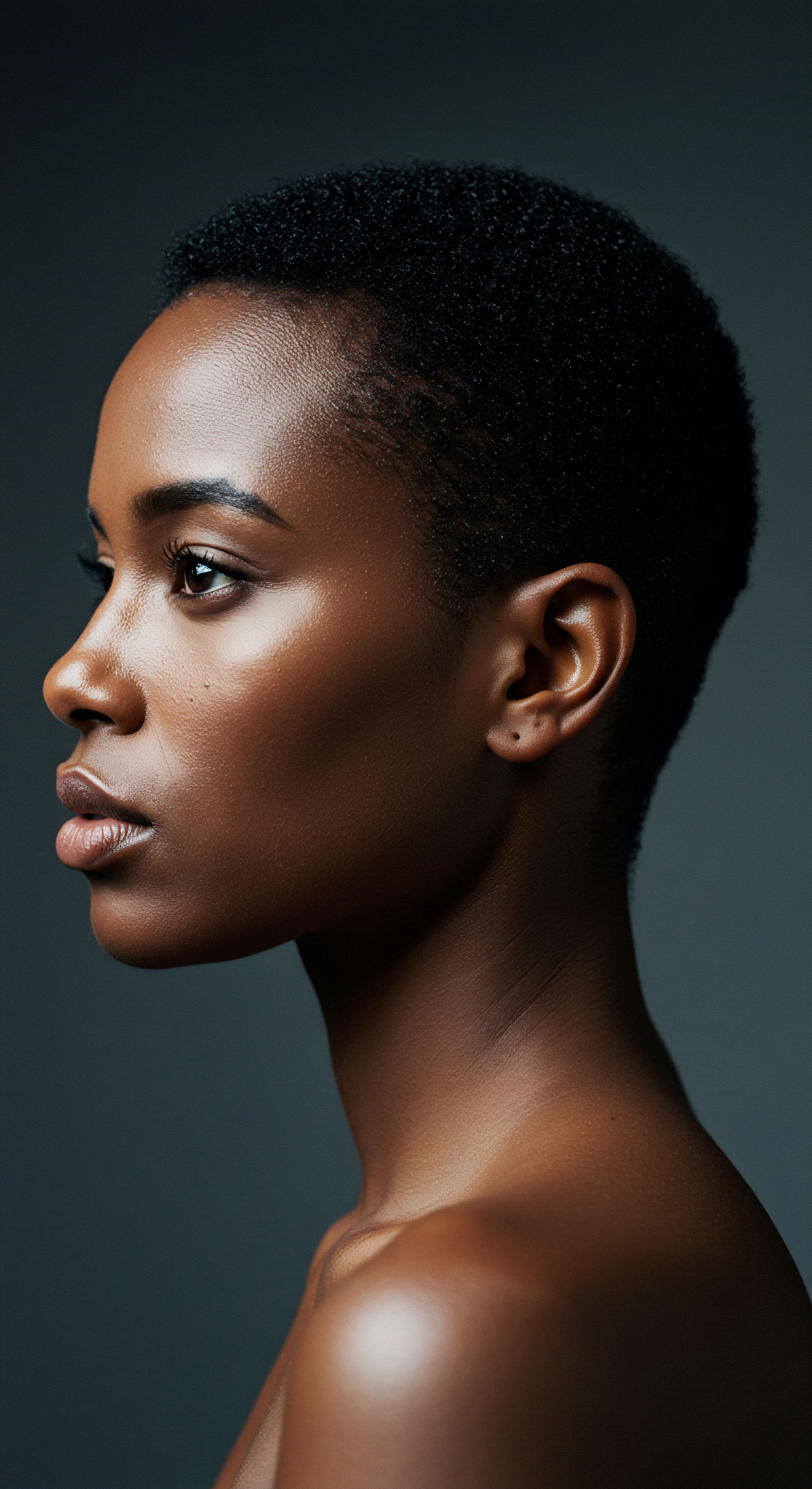
References
- Yu, X. Li, B. Chen, S. Liu, C. & Zhang, W. (2019). The friction properties of human hair. Journal of Cosmetic Science, 70(4), 221-231.
- Lauri, P. & Puschmann, H. (2015). Biomechanics of hair fibers ❉ a review. Skin Research and Technology, 21(1), 1-12.
- Robbins, C. R. (2012). Chemical and Physical Behavior of Human Hair (5th ed.). Springer.
- Gavazzoni Dias, M. F. R. (2015). Hair Cosmetics ❉ An Overview. International Journal of Trichology, 7(1), 2-15.
- McMichael, A. J. & Tyring, S. K. (Eds.). (2009). Hair and Scalp Diseases ❉ Medical and Surgical Approaches. CRC Press.
- Tosti, A. & Piraccini, B. M. (2015). Hair and Scalp Diseases ❉ Clinical Practice. Springer.